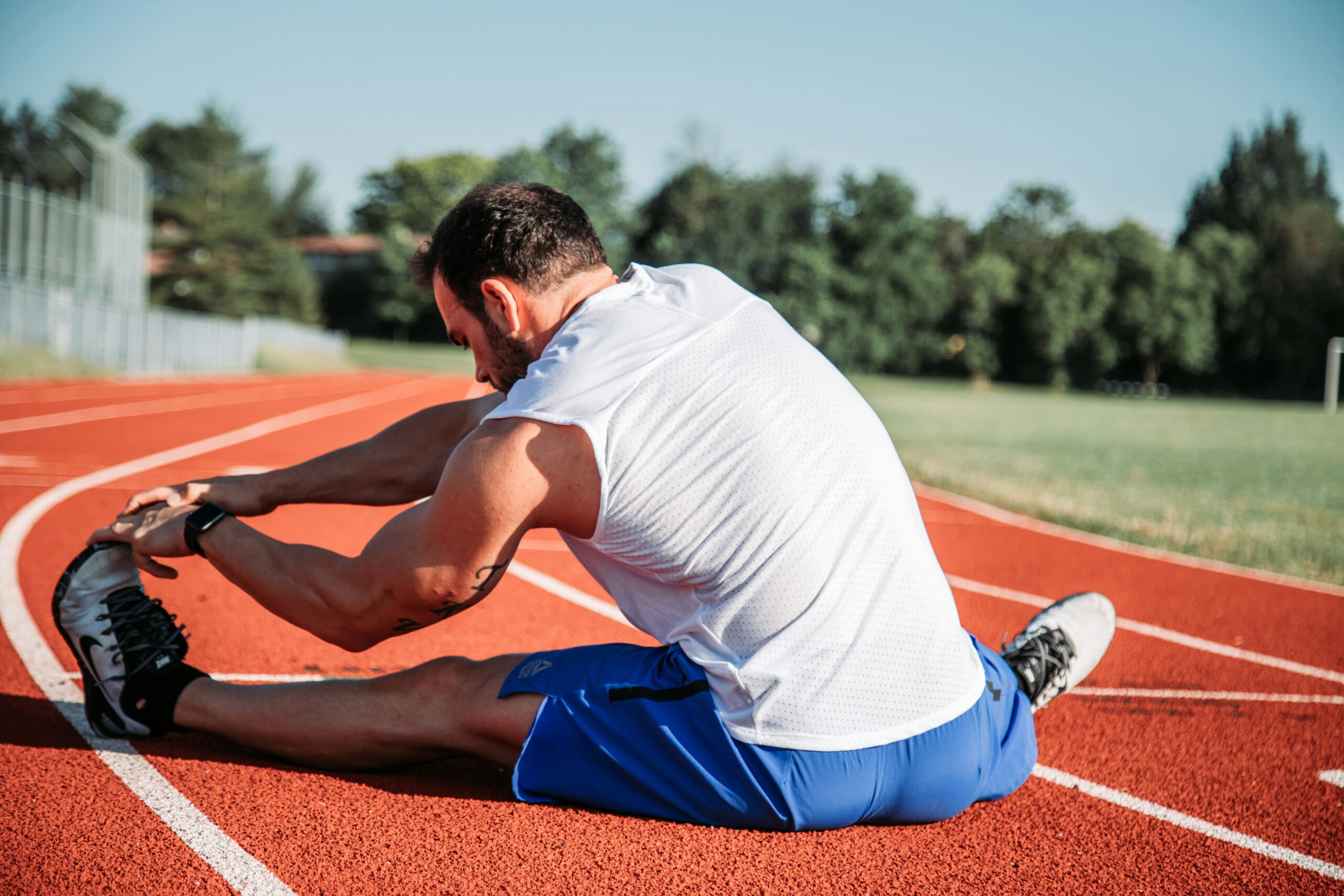Stretching is one of the most commonly recommended practices to enhance flexibility, prevent injuries, and support physical recovery. However, there is ongoing debate about the ideal timing and methods, particularly in connection with physical activity. The Importance of Stretching for Our Body
Stretching is a fundamental part of physical fitness and overall health. It not only enhances flexibility but also affects deeper biological processes:
Flexibility and Muscle Health
Stretching adjusts the length of muscles and tendons, increasing the range of motion in joints. This is especially important for performing everyday movements, such as bending or reaching, without discomfort.
– Regular stretching prevents muscle shortening caused by repetitive movement patterns or a sedentary lifestyle.
Injury Prevention
Stretching makes muscles more elastic and resilient to sudden strain. Dynamic stretching before exercise, in particular, helps reduce the risk of injury by preparing the body for exertion.
Recovery and Relaxation
Stretching after exercise helps relax the muscles, promotes blood circulation, and accelerates the removal of metabolic by-products like lactate. Additionally, stretching has a calming effect on the nervous system and can reduce stress.
The Biological Processes Behind Stretching
The Role of Muscle Spindles
Muscle spindles are specialized receptors within muscles that measure muscle length and stretch. If a muscle is stretched too quickly or intensely, the spindles activate a protective mechanism called the stretch reflex. This reflex causes involuntary muscle contraction to prevent overstretching injuries.
➡ Conclusion: Slow, controlled stretching minimizes the stretch reflex and allows for more effective elongation of the muscle.
Golgi Tendon Organs and Muscle Relaxation
Golgi tendon organs, located in tendons, respond to muscle tension. When a stretch is held for at least 20 seconds, these organs send signals to the nervous system to reduce muscle tension—a process known as autogenic inhibition, which leads to relaxation of the stretched muscle.
Improved Blood Flow
Stretching promotes blood flow within the muscles, improving the supply of oxygen and nutrients while aiding the removal of waste products.
Stretching Before and After Exercise: Pros and Cons
The question of whether to stretch before or after exercise is one of the most frequently debated topics among athletes, physiotherapists, and scientists. Both approaches have specific advantages but also potential drawbacks.
Before Exercise
Pros:
- Preparation for Movement: Dynamic stretching (e.g., arm and leg swings) increases body temperature and activates muscles, enhancing performance.
- Increased Range of Motion: Dynamic stretching can improve joint mobility, which is advantageous for sports like gymnastics or dance.
- Injury Prevention: Enhanced muscle flexibility lowers the risk of strains and other overuse injuries.</li>
<p>Cons:
- Reduced Strength from Static Stretching: Studies show that prolonged static stretching before strength-based exercises (like weightlifting) can reduce maximum force output by up to 5–30%.
- Stretch Reflex Activation: Intense or uncontrolled stretching before exercise may lead to involuntary muscle contractions, impairing performance.
After Exercise
Pros:
- Promotes Recovery: Gentle static stretching relaxes the muscles and supports the breakdown of metabolic by-products like lactate.
- Improved Flexibility: Muscles are warm and elastic post-exercise, creating ideal conditions for flexibility training.
- Stress Relief:&lt;/strong> Holding static stretches helps calm the nervous system and promotes a sense of relaxation.
Cons:
<ul>
- =”list-style-type: none;”>
- <li
class=”yo
- ast-text-mark” style=
“list-styl
- e-type: none;”>><ul>
- =”list-style-type: none;”><ul><li</ul></li>
<p>><s
- class=”yoast-text-mark”>pe: none;”><ul>
- trong>Unsuitable fo
r Injuries
- : Stretching immediat
ely after
- a muscle injury (e.g., st
rain) can
- hinder the healing process.
- Time Investment:</strong> Many athletes skip stretching after training, viewing it as non-essential.
</
ul>
<
/ul>
➡<s
- pe: none;”>
- pe: none;”><ul>trong> Tip:</strong> Dynami</li>
</li>
- pe: none;”>
c stretchi
- ng is be
st before
- exercise as
it combin
- es mobility training with cardiovascula
r activati
- on. Static st
retching s
- hou
ld be rese
- rved for
post-exercise sessions to enhance flexibility and aid recovery.
<h2>Common Mistakes and Their Consequences</h2>
<
ul>
- le=”list-style-type: none;”>
- class=”yoast-text-mark”>yle=”list-style-type: none;”>
- <strong>Stretching Too Quickly:</strong> May trigger the stretch reflex, causing unwanted muscle tension.
- Overstretching: Can lead to micro-tears in muscles and tendons, resulting in pain and inflammation.</li>
- <strong>Incorrect Posture: Strains other muscle groups or joints, potentially causing long-term imbalances.
- <li><strong>Irregular Practice:</strong> Stretching is only effective when done consistently.
- class=”yoast-text-mark”>yle=”list-style-type: none;”>
- le=”list-style-type: none;”>
Exercises
Dynamic Stretching (Before Exercise)
Arm Circles: Slowly rotate your arms forward and backward to mobilize the shoulders.
<strong>Lunge with Rotation: Take a forward lunge and twist your torso toward the front leg.
Static Stretching (After Exercise)
Lateral Side Stretch: Extend one arm over your head and lean to the side to stretch the oblique muscles.
Calf Stretch: Stand facing a wall, place one foot behind you, and press the back heel into the ground.
Arm Stretches
Triceps Stretch: Sit or stand upright. Raise one arm overhead and bend the elbow so your hand touches your upper back. Use the opposite hand to gently pull the elbow back. Hold for 20–30 seconds without arching your back.
Chest and Biceps Stretch: Stand upright and clasp your hands behind your back. Stretch your arms downward while pulling your shoulders back. Slightly lift your arms for a deeper stretch. Hold for 20–30 seconds.
Leg Stretches
Quadriceps Stretch: Stand near a wall for support. Grab the ankle of one leg and pull your heel toward your glutes. Keep your knees aligned and hold for 20–30 seconds on each side.
Hamstring Stretch: Sit on the floor with your legs extended. Slowly reach forward, keeping your back straight, to touch your toes. Hold for 20–30 seconds without rounding your back.
Calf Stretch:Stand facing a wall, take a step back with one leg, and press the heel into the ground. Hold for 20–30 seconds on each side.
Back Stretches</h4>
<st</p>
rong&
gt;Cat-Cow Stretch (Dynamic): Begin on all fours. Round your back upward (Cat) and then arch it downward (Cow). Perform 8–10 repetitions slowly, syncing your breath.
Spinal Twist: Sit with one leg extended and the other bent, placing the foot flat on the ground. Twist your torso toward the bent leg and hold for 20–30 seconds before switching sides.</p>
Neck
Stretches
Lateral Neck Stretch: </strong>Sit or stand upright. Tilt your head sideways so your ear moves toward your shoulder. Use the opposite hand to gently pull the head further. Hold for 20–30 seconds per side.
<strong>Forward Neck Stretch: Lower your chin toward your chest. Place your hands lightly on the back of your head for a deeper stretch. Hold for 20–30 seconds.
<h4>Summary and Tips
Hold each stretch for at least 20–30 seconds to achieve lasting effects.
Breathe deeply and steadily to relax the muscles.
/>Avoid stretching to the point of pain—a mild pull is normal, but pain signals overexertion.
Conclusion: The Perfect Stretching Routine
Stretching is an indispensable part of a healthy lifestyle. The right approach depends on timing and purpose:
Before Exercise: Dynamic stretching for preparation and activation.
After Exercise: Static stretching for relaxation and recovery.
With regular and correctly performed stretching exercises, you can enhance your flexibility, prevent injuries, and improve your physical performance over the long term.







Leave A Comment